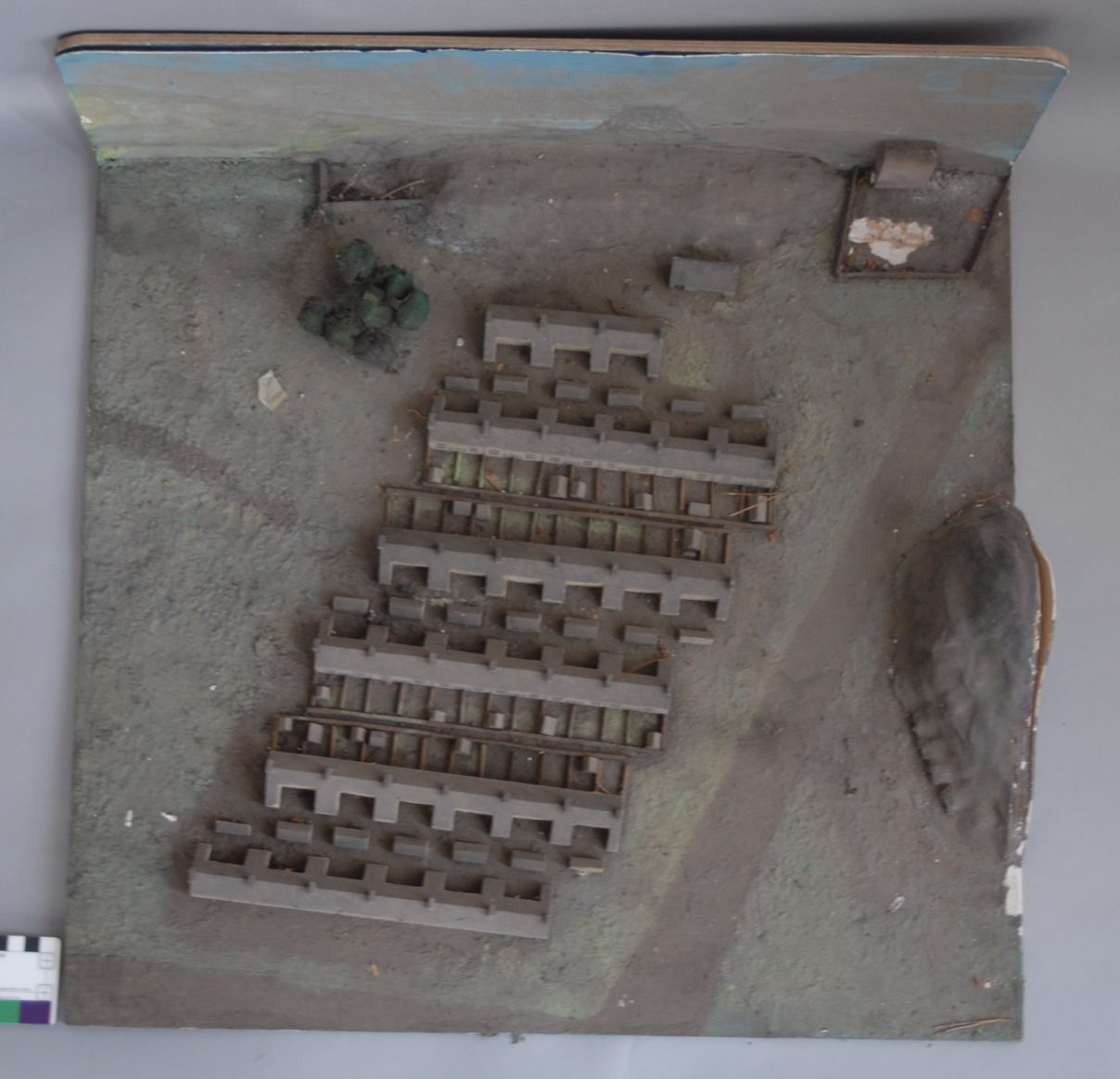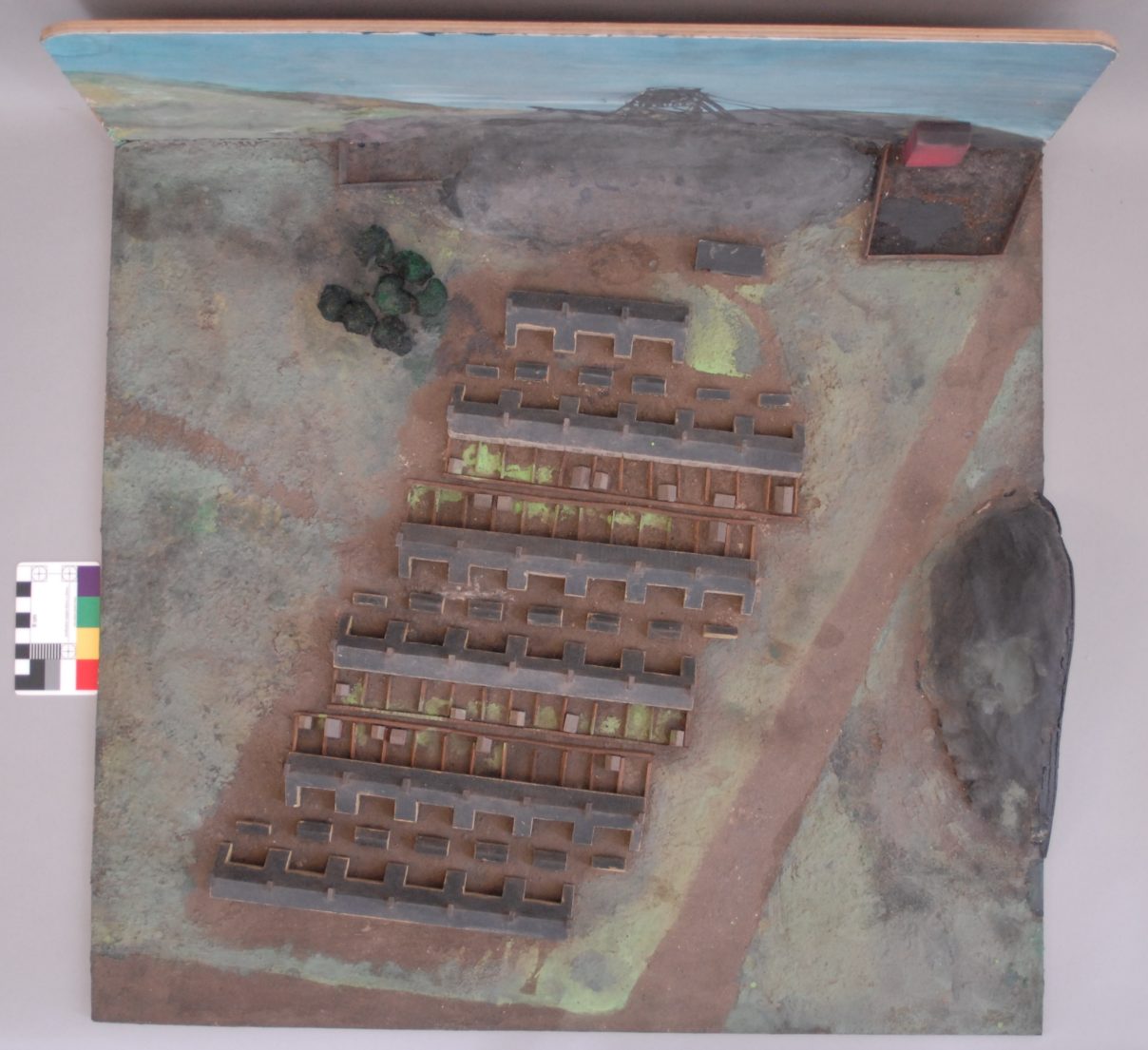July ’22
Annfield Plain

The object is a model of a section of Annfield Plain, and forms part of Beamish Museum’s collection. It depicts a mixed media, 3-dimensional model of part of a 20th century residential estate, “Annfield Place” a small estate of terraced buildings in the village of Annfield Plain, County Durham.
Annfield Plain is a small, former mining village near Stanley in Co. Durham, Northeast England. The name “Anfield”, as it was originally, appears to derive from “the fields of An”, referring to a man who lived before the Norman Conquest.
The “Plain” part of the name is thought to be a reference to the inclined plane built to haul wagons up Pontop hill on the Stanhope and Tyne Railway. The engine used by the plane was known as the Anfield Engine because of its proximity to Anfield House, built in the 18th century on nearby Loud Hill. The spelling changed to “Annfield Plain” around 1856, when houses were built for miners on the nearby plateau.

The area was known as Collierly, with Annfield Plain in usage only from the mid – late 19th century. Coal was mined there from the 17th century to the 1970s, when the last pit, Morrison Busty, closed in 1973.
The model was made for an exhibition “Then & Now” by Annfield Plain Secondary School in 1971. It represents, “Then”, i.e. 1900s Annfield Place, whereas the, “Now” model depicted part of the village in 1970. The models were donated to Beamish Museum shortly after the exhibition. They are presumed to have been made by pupils of the school.
Condition
- Covered in a thick layer of dust and dirt with large pieces of debris visible on the surface
- Evidence of flaking paint from the surface
- Signs of iron corrosion on the trunks of the trees
- The material creating the foliage of the trees appears unstable
- The paper on the wooden base is lifting in places
- There is evidence of a past infestation.
Conservation

Large pieces of debris were removed from the model with tweezers. Following this the object was brushed and vacuumed to remove the larger pieces of dirt and debris. The nozzle of the vacuum was covered with a cloth to prevent any large fragments from being lost. The model was vacuumed several times to ensure as much loose dirt and debris could be removed as possible before further cleaning took place.
In order to remove the more ingrained dirt from the painted wooden base, the object was dry cleaned using cosmetic sponges as they successfully trapped dirt without damaging the surface. The model was then wet cleaned using cotton wool swabs with an appropriate solvent as this would remove further dirt and could be used on the more delicate areas such as the houses without causing damage.
The painted paper background was re-adhered to the wooden backboard with a suitable adhesive painted on with a soft bristled brush. They were then held together with clamps cushioned by plastazote until the adhesive had set to create a strong join. The raised hill on the edge of the model was also re-adhered to the wooden base using the same adhesive. This was held in place with a heavy paper weight until set.

The rusty wires of the trees were surface cleaned using cotton swabs with an appropriate solvent before being treated with a rust converter in order to stabilise the corrosion on the surface. Following treatment, the metal was coated using a suitable consolidant to help prevent future deterioration.
The foam trees were treated using an appropriate consolidant which would stabilise the material without damaging it. This was applied using a fine needle and syringe in order to penetrate further into the material while also retaining control of how much consolidant was being applied.
Areas where the paint was flaking on the model were consolidated using a suitable solution in order to stabilise the remaining paint layers and prevent further deterioration. These areas where there was already paint loss visible were then colour matched using acrylic paints in order to blend the areas of loss with the original surface.
Finally, the wooden components of the model were treated to prevent woodworm using a commercial product. This would help to protect the model from insect attack.
Stay tuned for next month’s object!
